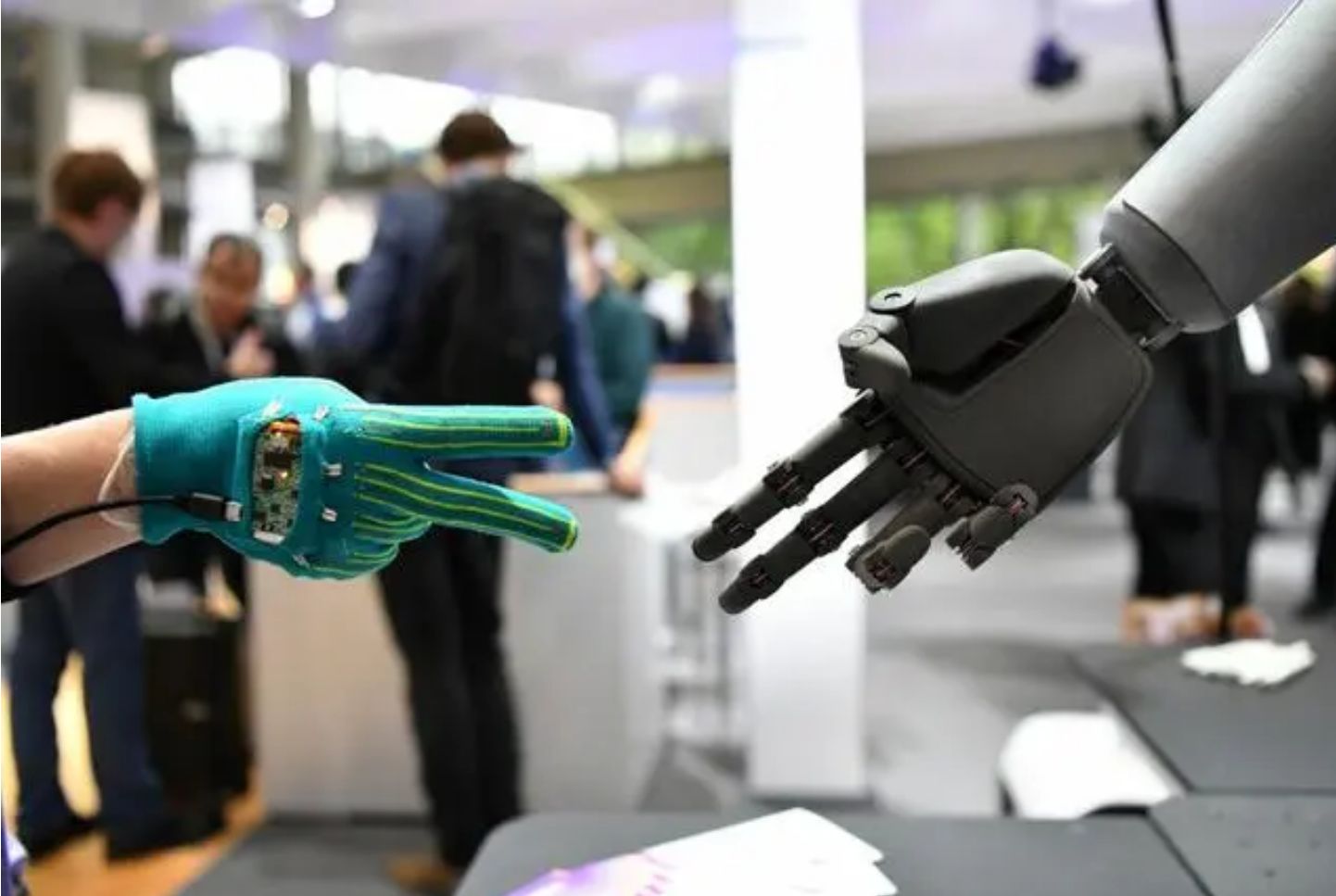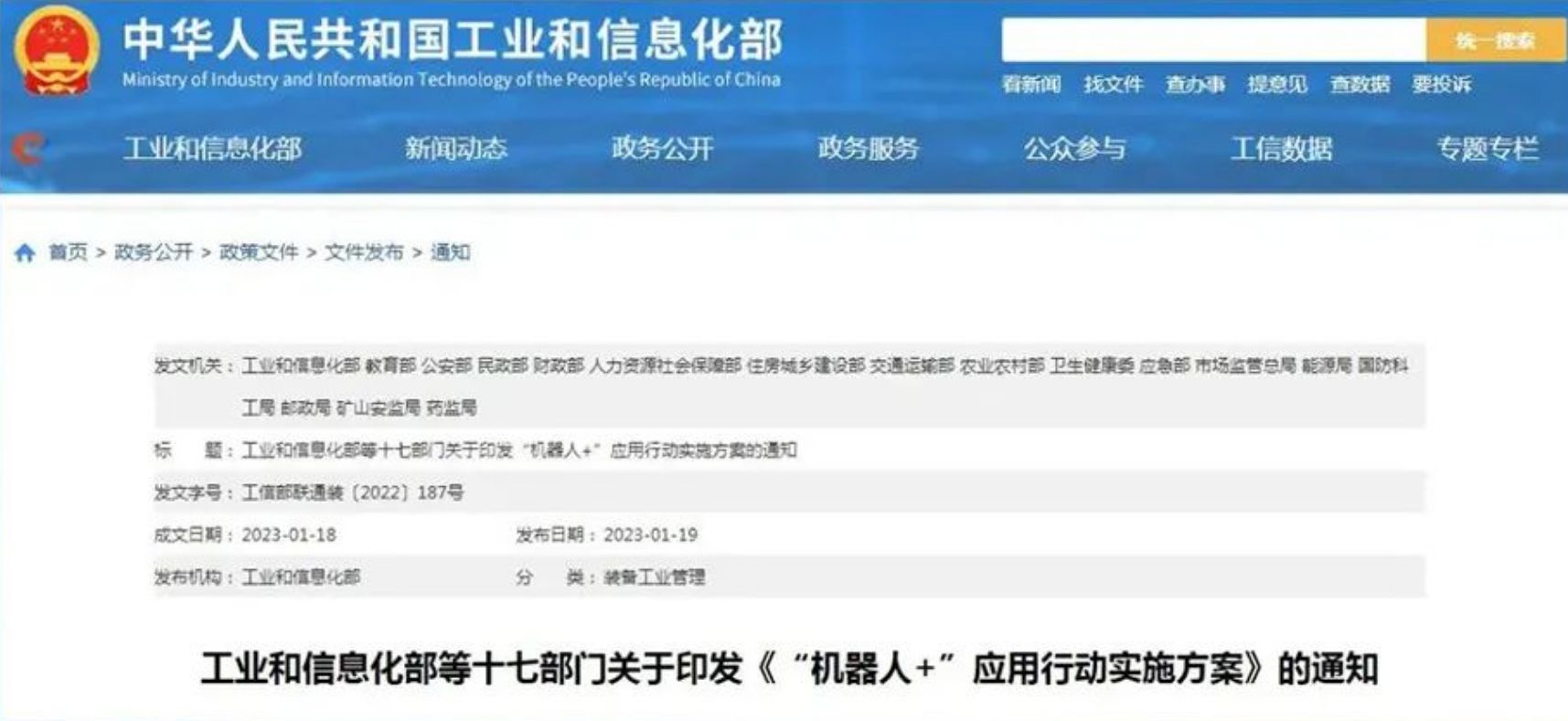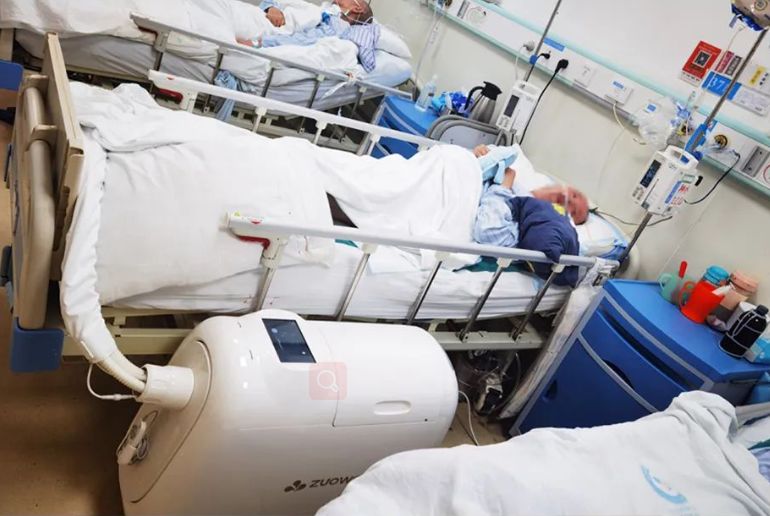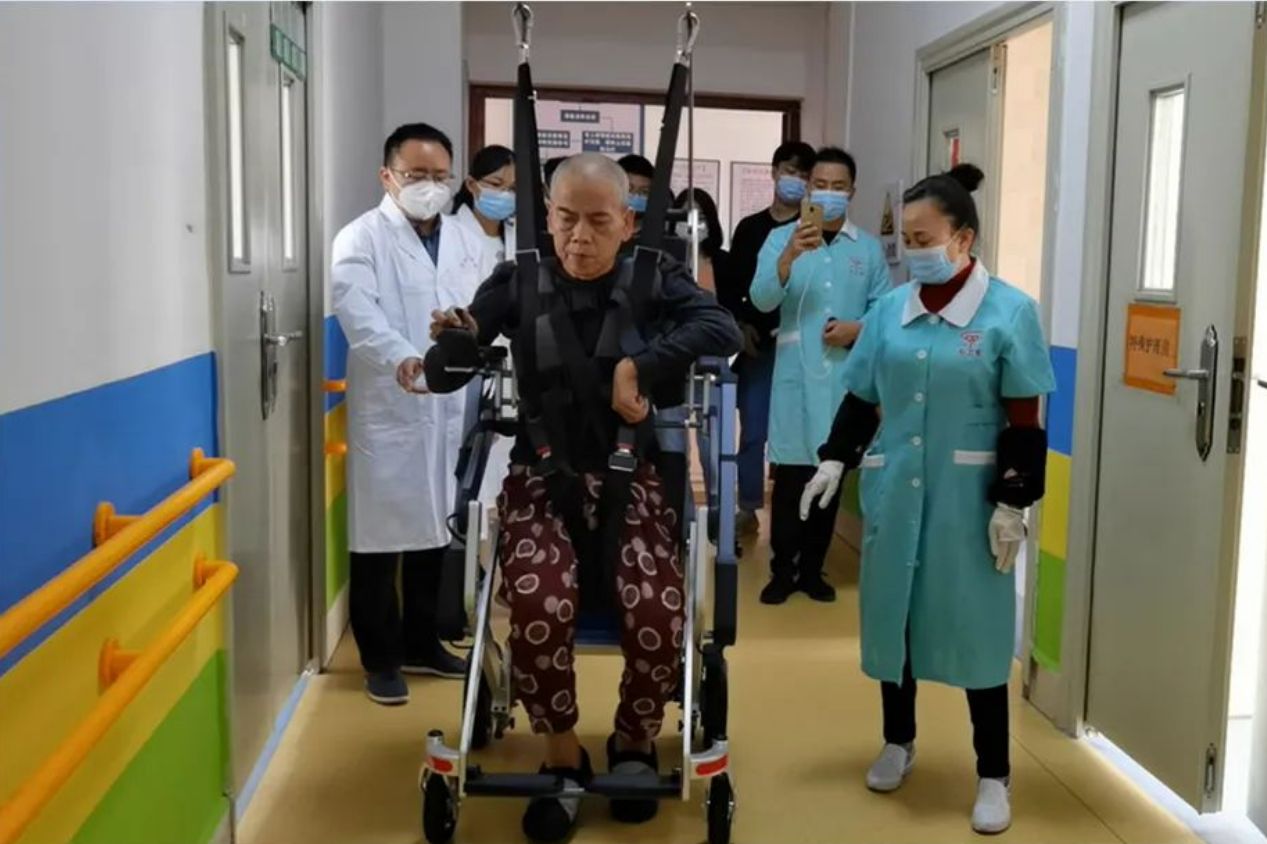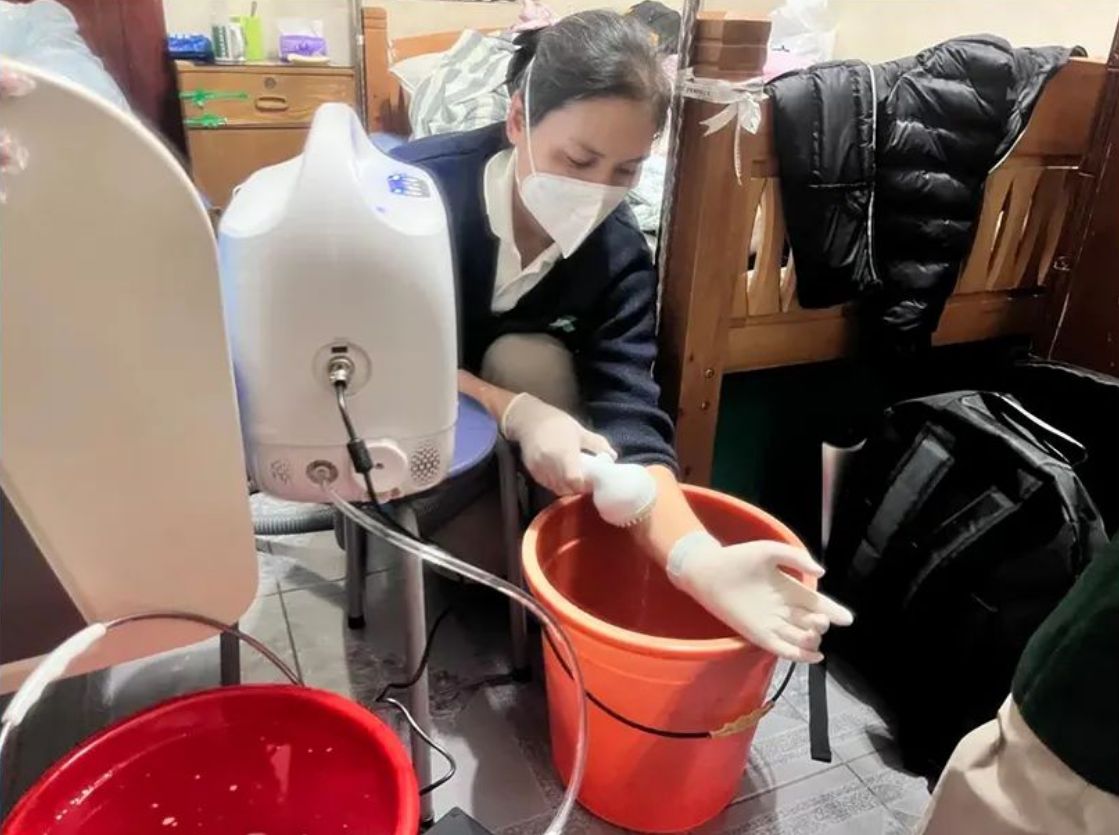As more and more elderly people need care and there is a shortage of nursing staff. German scientists are stepping up the development of robots, hoping that they can share part of the work of nursing staff in the future, and even provide auxiliary medical services for the elderly.
With the help of robots, doctors can remotely evaluate the results of the robotic on-site diagnosis, which will provide convenience for elderly people living in remote areas with limited mobility.
In addition, robots can also provide more personalized services, including delivering meals to the elderly and unscrewing bottle caps, calling for help in emergencies such as the elderly falling or assisting the elderly in video calls, and allowing the elderly to gather with relatives and friends in the cloud.
Not only foreign countries are developing elderly care robots, but China’s elderly care robots and relative industries are also booming.
The shortage of nursing workers in China is normalized
According to statistics, there are currently more than 40 million disabled people in China. According to the international standard of 3:1 allocation of disabled elderly and nursing workers, at least 13 million nursing workers are needed.
According to the survey, the work intensity of nurses is very high, and the direct reason is the shortage of the number of nurses. Elderly care institutions are always recruiting nursing workers, and they will never be able to recruit nursing workers. Work intensity, unattractive work, and low wages have all contributed to the normalization of the shortage of care workers.
Only by filling the gap as soon as possible for nursing staff for the elderly can we give the elderly in need a happy old age.
Smart devices help caregivers in the care of the elderly.
In the context of the rapid increase in the demand for long-term care for the elderly, to solve the shortage of elderly care personnel, it is necessary to start and make efforts to reduce the work pressure of elderly care, improve care efficiency, and improve management efficiency. The development of 5G, Internet of Things, big data, artificial intelligence, and other technologies has brought new possibilities to these issues.
Empowering the elderly with technology is one of the important means to solve the shortage of front-line nursing staff in the future. Robots can replace nursing staff in some repetitive and heavy nursing work, which is conducive to reducing the workload of nursing staff; Self-care; help excretion care for the bedridden elderly; help elderly patients with dementia guard, so that limited nursing staff can be put into important nursing positions, thereby reducing the labor intensity of personnel and reducing nursing costs.
Nowadays, the aging population is soaring and the number of nursing staff is scarce. For the elderly care service industry, the emergence of elderly care robots is like sending charcoal in a timely manner. It is expected to fill the gap between the supply and demand of elderly care services and improve the quality of life of the elderly.
Elder care robots will enter the fast lane
Under the promotion of government policy, and the prospect of the elderly care robot industry is becoming increasingly clear. In order to introduce robots and smart devices into elderly care institutions, home communities, comprehensive communities, hospital wards and other scenarios, on January 19, 17 departments including the Ministry of Industry and Information Technology and the Ministry of Education issued a more specific policy plan: “Robot + Application Action Implementation Plan”.
The “Plan” encourages relevant experimental bases in the elderly care field to use robot applications as an important part of experimental demonstrations, develop and promote technology to help the elderly, new technologies, new products, and new models, and proposes to speed up the development of disability assistance, bathing assistance, toilet care, rehabilitation training, housework, and emotional escort Actively promote the application verification of exoskeleton robots, elderly care robots, etc. in elderly care service scenarios; research and formulate application standards for robot assistance for the elderly and disabled technology, and promote the integration of robots into different scenarios and scenarios of elderly care services in the key areas, improve the intelligent level of elderly care services.
The increasingly mature intelligent technology takes advantage of the policies to intervene in the care scene, and hand over simple and repetitive tasks to robots, which will help liberate more manpower.
Smart elderly care has been developed in China for many years, and various forms of elderly care robots and smart care products continue to emerge. SHENZHEN ZUOWEI TECHNOLOGY CO.,LTD.has developed several nursing robots for different scenarios.
For the disabled elderly who are bedridden all year round, defecation has always been a problem. Manual processing often takes more than half an hour, and for some elderly people who are conscious and physically disabled, their privacy is not respected. SHENZHEN ZUOWEI TECHNOLOGY CO.,LTD. developed Incontinence Cleaning Robot, it can realize automatic sensing of urine and faces, negative pressure suction, warm water washing, warm air drying, during the whole process the nursing worker does not touch dirt, and the nursing is clean and easy, which greatly improves the nursing efficiency and maintains the dignity of the elderly.
The elderly who have been bedridden for a long time can also carry out daily travel and exercise for a long time with the assistance of intelligent walking robots and intelligent walking-assisting robots, which can increase the user’s walking ability and physical strength, delay the decline of physical functions, thereby increasing the self-esteem and self-confidence of the elderly, and prolong the life of the elderly. Its longevity and improved quality of life.
After the elderly are bedridden, they need to rely on nursing care. The completion of personal hygiene depends on the nursing staff or family members. Washing hair and bathing has become a big project. Intelligent bathing machines and portable bathing machines can solve the big troubles of the elderly and their families. The bathing devices adopts the innovative method of sucking back the sewage without dripping, allowing the disabled elderly to wash their hair and take a bath on the bed without carrying it, avoiding secondary injuries caused during the bathing process, and reducing the risk of falling in the bath to zero; it only takes 20 minutes for one person to operate It takes only 10 minutes to bathe the whole body of the elderly, and it takes 5 minutes to wash the hair.
These intelligent devices solved the pain points of care for the elderly in various scenarios such as homes and nursing homes, making the elderly care model more diverse, humanized and efficient. Therefore, to alleviate the shortage of nursing talents, the state needs to continue to provide more support for the elderly care robot industry, intelligent nursing and other industries, so as to help realize the medical care and care for the elderly.
Post time: Apr-15-2023


